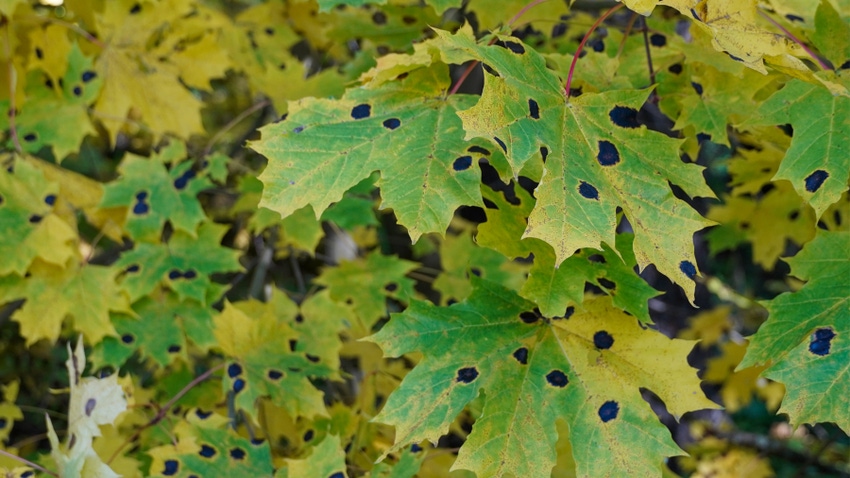
Can tar spot in corn spread to become tar spot on my maple trees? No. It is not the same thing. The tar spot we see spreading to cornfields around the country is caused by Phyllachora maydis. Tar spot in maple trees is caused by Rhytisma acerinum.
There are also different tar spot diseases that will infect lima beans and soybeans. They are all commonly called tar spot, but they are not caused by the same organism. As one source put it, plant pathologists like using common names such as “tar spot” to describe diseases that may be quite different and infect different plants.
Tar spot in corn has spread to counties as far west in the U.S. as the eastern third of Nebraska and the northeast corner of Kansas, along with a couple of counties in the southeast corner of South Dakota. First reported in the Midwest in 2015, the disease continues to spread across the Corn Belt — with the capability of causing considerable yield loss in corn.
Unsightly but harmless
On the other hand, tar spot on maple trees is unsightly, but it is relatively harmless to the trees. Several different fungi in the genus infect the leaves of maples, causing raised black spots to form on the upper-leaf surfaces.
While heavy infestations can cause early leaf drop, it is rarely more than a cosmetic condition. Usually, the first symptoms show up in mid-June as small pale-yellow spots. Over time, the spots enlarge, and the yellow color intensifies, eventually becoming a black spot later in the season.
The fungus that causes tar spot in maple trees generally overwinters on infected leaves that fall to the ground. The following spring, as new leaves are becoming prevalent, the fungal tissue of the spots on the old leaves ripens, splits and allows tiny spores to escape and infect new susceptible hosts.
The only way to manage tar spot in trees is through sanitation. That involves raking and destroying leaves from affected trees in the fall, which reduces the number of overwintering fungal structures that can reproduce the next spring.
It is difficult to control tar spot on maples with fungicides because complete coverage of the leaf surfaces is necessary and not usually a viable option, especially for mature trees.
Get more details at plantclinic.cornell.edu.
Read more about:
Tar SpotAbout the Author(s)
You May Also Like






